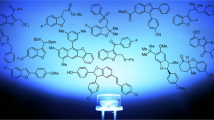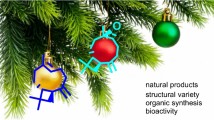Abstract
Conclusions have been made regarding the structure of the complexes formed between flavonol and boranes of different structures on the basis of the analysis of their 1H, 13C, and 11B NMR spectra, IR and electronic spectra, and also from the results of quantum-chemical calculations. In all of the complexes, independently of the structure and acceptor properties of the boranes, it was found that the donor acceptor bond is formed between the boron atoms and the oxygen of the carbonyl group in the flavonol. Despite the lowered electron-donor ability of the carbonyl group oxygen atom after the formation of the bond to the boron atom it is likely that the hydrogen bond between the carbonyl and the 3-hydroxy group of the flavonol is retained. It was found that the carbonyl group of the flavonol has a lower electron-donor ability than the analogous group of aliphatic and aromatic ketones.
Similar content being viewed by others
REFERENCES
E. Bishop (editor), Indicators, Pergamon Press, Oxford, New York, Toronto (1972).
Z. Marczenko, Kolorymetryczne Oznaczanie Pierwiastkov, Naukowo-Techniczne Wyd., Warsaw (1968).
A. D. Roshal, A. V. Grigorovich, A. O. Dorochenko, V. G. Pivovarenko, and A. P. Demchenko, J. Phys. Chem., A, 102, 5907 (1998).
A. D. Roshal, A. V. Grigorovich, A. O. Dorochenko, V. G. Pivovarenko, and A. P. Demchenko, J. Photochem. Photobiol., A. Chemistry, 127, 89 (1999).
J. J. Gajewski and P Ngernmeesri, Org. Lett, 2, 2813 (2000).
M. T. Reetz, M. Hüllmann, W. Massa, S. Berger, P. Rademacher, and P. Heymanns, J. Amer. Chem. Soc., 108, 2405 (1986).
S. Balasubramanian, D. L. Ward, and M. G. Nair, J. Chem. Soc., Perkin Trans. 1, 567 (2000).
D. Rochal, V. G. Mitina, V. D. Orlov, and O. A. Ponomariov, Polyphenol Communications, Bordeaux (1996), p. 147.
G. Görlitz, H. Hartmann, V. Wintgens, P. Valat, and J. Kossanyi, Abstracts of XVIIIth International Conference on Photochemistry, Warsaw, Poland (1997), O5.1
F. Umland, E. Hohaus, and K. Brodte, Chem. Ber., 106, 2427 (1973).
H. Nöth and B. Wrackmeyer, Nuclear Magnetic Resonance of Boron Compounds, Springer-Verlag, Berlin, Heidelberg, New York (1978).
V. Lobanov, MOPAC 6.0 Program, Florida University (1996).
J. P. Stewart, J. Comput. Chem., 10, 209 (1989).
Author information
Authors and Affiliations
Rights and permissions
About this article
Cite this article
Roshal, A.D., Munos, O., Sakhno, T.V. et al. Synthesis and Structure of Borane Complexes with 3-Hydroxyflavone. Chemistry of Heterocyclic Compounds 38, 1412–1418 (2002). https://doi.org/10.1023/A:1022198930503
Issue Date:
DOI: https://doi.org/10.1023/A:1022198930503




